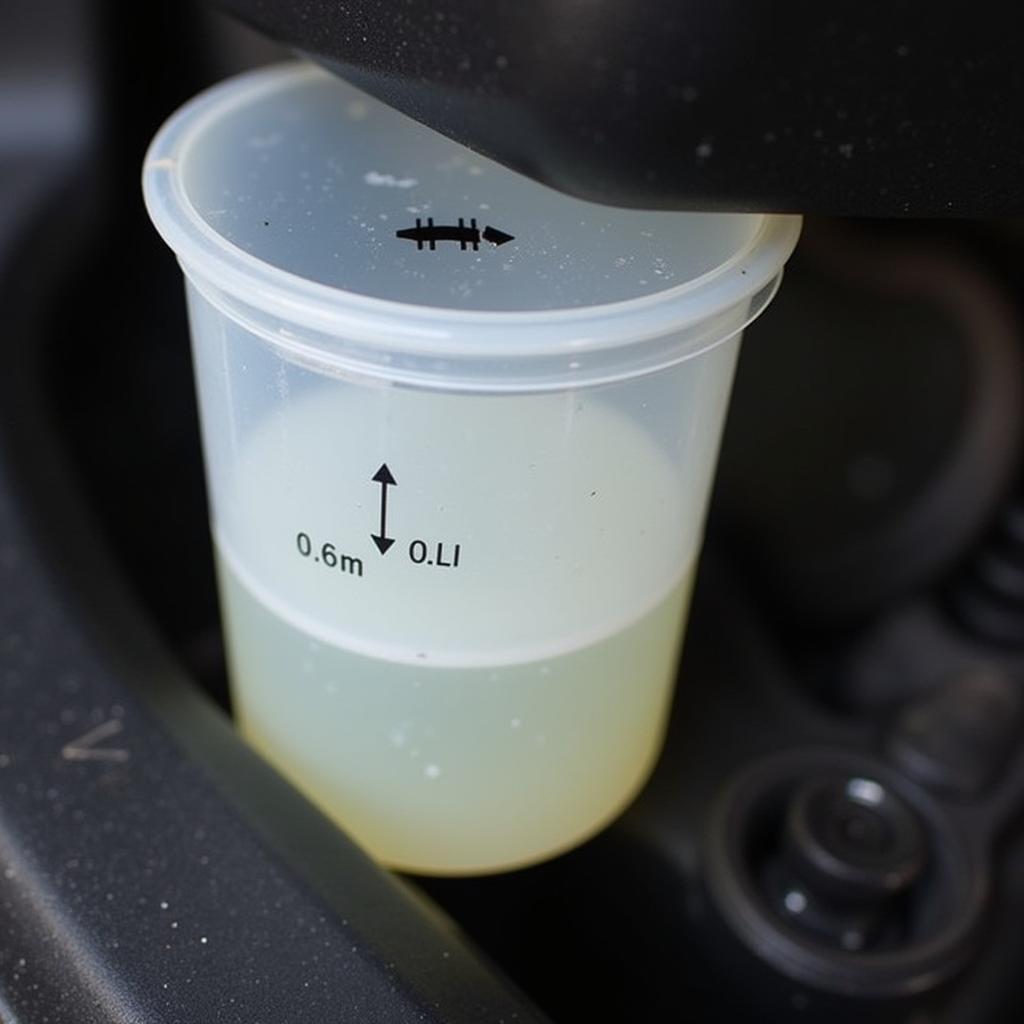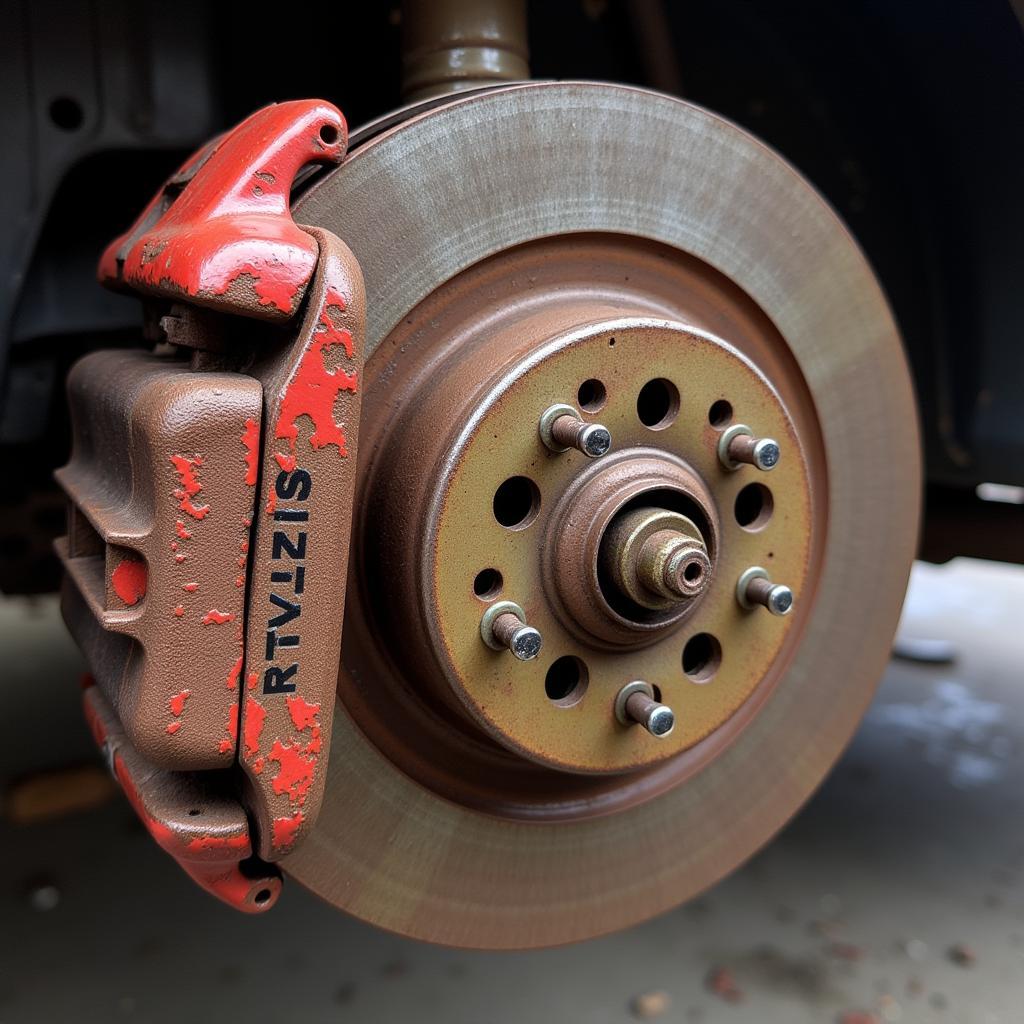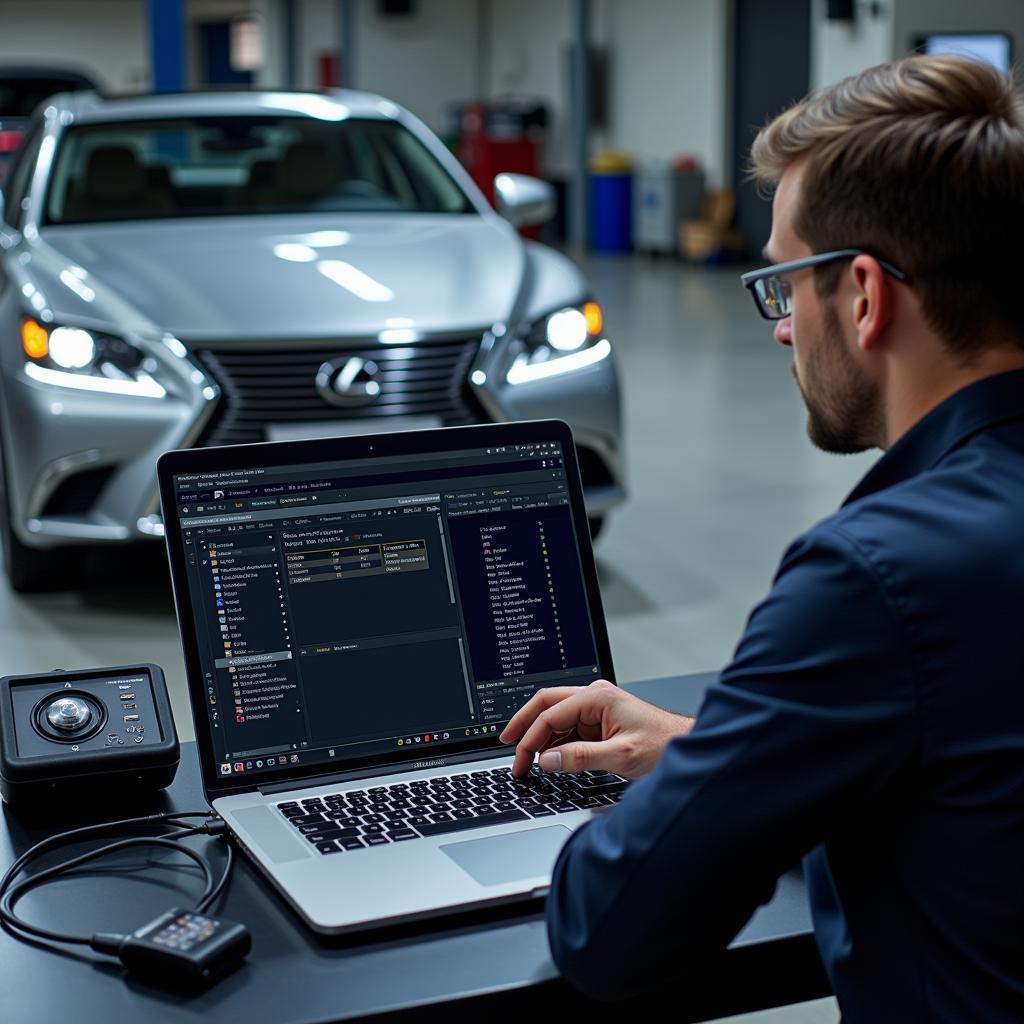The brake warning light on your Scion tC is a crucial safety feature designed to alert you to potential issues within your braking system. Ignoring this warning light can be dangerous, potentially leading to brake failure and accidents. This comprehensive guide will delve into the common causes behind the Scion tC brake warning light and offer effective solutions to help you resolve the problem and get back on the road safely.
Understanding Your Scion tC’s Brake System
Before we dive into the causes, it’s essential to understand the basics of your Scion tC’s braking system. This system is composed of several interconnected components working in harmony to slow down or stop your vehicle. These components include:
- Brake Pedal: The component you press to engage the brakes.
- Brake Booster: This amplifies the force you apply to the brake pedal, making braking easier.
- Master Cylinder: This component converts the mechanical force from the pedal into hydraulic pressure.
- Brake Lines: These lines carry the hydraulic pressure from the master cylinder to the brakes at each wheel.
- Brake Calipers: These components house the brake pads and pistons.
- Brake Pads: These pads press against the brake rotors to create friction, slowing or stopping the vehicle.
- Brake Rotors: These discs connect to the wheels and provide a surface for the brake pads to grip.
When you press the brake pedal, it initiates a chain reaction, ultimately forcing the brake pads to clamp down on the rotors. This friction converts your car’s kinetic energy into heat, effectively slowing it down or bringing it to a stop.
Common Causes of a Scion tC Brake Warning Light
There are several reasons why your Scion tC’s brake warning light might illuminate. Some of the most common causes include:
1. Worn Brake Pads
Brake pads are designed to wear down over time. When they become too thin, the brake warning light will activate. Worn brake pads reduce your braking power and can cause damage to the rotors if not replaced promptly.
2. Low Brake Fluid Level
Your Scion tC’s braking system relies on hydraulic pressure to function correctly. If there’s a leak in the brake lines, the brake fluid level will drop, triggering the warning light. Low brake fluid is a serious safety concern and requires immediate attention.
 Scion tC Low Brake Fluid
Scion tC Low Brake Fluid
3. Faulty Brake Caliper
The brake calipers are responsible for pushing the brake pads against the rotors. A stuck or seized caliper can prevent the brakes from releasing properly, leading to reduced braking performance, uneven pad wear, and potentially a brake warning light.
 Scion tC Faulty Brake Caliper
Scion tC Faulty Brake Caliper
4. ABS Issues
Most modern vehicles, including the Scion tC, have an Anti-lock Braking System (ABS). This system helps prevent the wheels from locking up during hard braking, improving control and stability. If there’s a problem with the ABS system, it can trigger the brake warning light.
5. Faulty Brake Light Switch
While not directly related to the braking system, a faulty brake light switch can also illuminate the brake warning light. This switch activates your brake lights when you press the pedal. If it malfunctions, it might disrupt the warning light system.
Troubleshooting Your Scion tC Brake Warning Light
Before taking your car to a mechanic, there are a few troubleshooting steps you can perform:
1. Check the Brake Fluid Level
Park your Scion tC on a level surface and open the hood. Locate the brake fluid reservoir (refer to your owner’s manual for the exact location). The reservoir will have a “Min” and “Max” marking. If the fluid level is below the “Min” line, add the appropriate brake fluid until it reaches the “Max” line.
2. Inspect the Brake Pads
Visually examine your brake pads through the spaces between the wheel spokes. If the pads are thinner than 1/4 inch, it’s time for a replacement.
3. Listen for Unusual Noises
Pay attention to any unusual noises coming from the brakes, such as grinding, screeching, or clicking. These noises can indicate worn brake pads, a faulty caliper, or other issues.
When to Seek Professional Help
If your Scion tC’s brake warning light remains on after checking the brake fluid and visually inspecting the brake pads, it’s crucial to seek professional help immediately. Driving with a compromised braking system is incredibly dangerous. A qualified mechanic can accurately diagnose the problem using specialized equipment and perform the necessary repairs to ensure your safety.
Remote Diagnostic and Programming Services
Advancements in automotive technology have led to the emergence of remote diagnostic and programming services. These services can be beneficial in diagnosing issues with your Scion tC’s brake system, especially if you suspect an issue with the ABS module or other electronic components.
Remote diagnostics allow qualified technicians to access your vehicle’s computer system remotely, retrieve diagnostic trouble codes, and analyze data in real-time. This can help pinpoint the root cause of the problem more efficiently, saving you time and money on unnecessary repairs.
Conclusion
The brake warning light on your Scion tC is not something to ignore. Addressing any underlying brake problems promptly is essential to maintain your safety and the safety of others on the road. Regular maintenance, including brake fluid checks and timely replacement of worn brake pads, can prevent many brake issues.
Remember, when it comes to brakes, erring on the side of caution is always the best approach. If you notice any signs of brake problems, including a lit warning light, seek professional assistance from a qualified mechanic without delay.

